A Wearable Low-Power Sensing Platform for Environmental and Health Monitoring: The Convergence Project
Abstract
:1. Introduction
2. Low-Power Wearable Sensing Platform: Architecture, Specifications and Design
- Analog and digital sensors
- Data acquisition and visualization in real-time with specific a App developed by CEA-LETI (Grenoble, France)
- Radio Frequency (RF) Microcontroller Unit (MCU)
- Bluetooth Low Energy (BLE) 2.4 GHz communication (data collection on mobile phone)
- Antenna circuit designed by our G-INP partner (Grenoble, France).
2.1. Electronic Architecture
2.2. Antenna
2.2.1. Antenna Specifications
2.2.2. Antenna Simulated Results
- The antenna in air (A1)
- The antenna with protected varnish and resin in air (A2)
- The antenna with protected layers above human’s wrist (A3)
- The antenna with protected layers folded around human’s wrist (A4)
2.3. Printed Circuit Board and Antenna Design
2.4. Consumption Test
2.5. Application Development
2.6. Integration
3. Sensors Characteristics
- -
- A bio-sensor, an ISFET sweat/pH sensor developed by EPFL [14]. The working principle similar to a MOSFET.
- -
- Gas sensors: a miniaturized gas sensor combining NO2, CO and NH3 gases on the same dye; with NO2 sensor developed by ENEA, NH3 sensor by UCL and CO sensor by IMT [7].
- -
- Humidity and Temperature sensors from STMicroelectronics, which are very low power with approximately 2 µA consumption @ 1 Hz output data rate. It is connected to µC via I2C bus and may be powered from 1.7 V to 3.6 V.
- -
- Activity sensor developed by EDI [4].
3.1. NO2 Sensor: Synthesis of the Sensing Materials
3.2. NO2 Sensor: Materials Characterizations
3.3. NO2 Sensor: Device Fabrication and Gas Sensing Protocol
3.4. CO Sensor: Preparation of Inkjet Material and Deposition
4. Tests and Results
4.1. NO2 Sensor: Results and Discussion
4.2. CO Sensor: RESULTS and Discussion
4.3. NO2 Sensor Tests with Low-Power Sensing Platform
5. Conclusions
Author Contributions
Funding
Institutional Review Board Statement
Informed Consent Statement
Data Availability Statement
Acknowledgments
Conflicts of Interest
References
- Ernst, T.; Guillemaud, R.; Mailley, P.; Polizzi, J.P.; Koenig, A.; Boisseau, S.; Pauliac-Vaujour, E.; Plantier, C.; Delapierr, G.; Saoutieff, E.; et al. Sensors and related devices for IoT, medicine and smart-living. In Proceedings of the 2018 IEEE Symposium on VLSI Technology, Honolulu, HI, USA, 18–22 June 2018. [Google Scholar]
- Zampogna, A.; Manoni, A.; Asci, F.; Liguori, C.; Irrera, F.; Suppa, A. Shedding Light on Nocturnal Movements in Parkinson’s Disease: Evidence from Wearable Technologies. Sensors 2020, 20, 5171. [Google Scholar] [CrossRef] [PubMed]
- World Health Organization. Health Aspects of Air Pollution with Particulate Matter, Ozone and Nitrogen Dioxide: Report on a WHO Working Group, Bonn, Germany 13–15 January 2003; World Health Organization: Geneva, Switzerland, 2003. [Google Scholar]
- Ancans, A.; Greitans, M.; Cacurs, R.; Rozentals, A.; Banga, B. Wearable sensor clothing for body movement measurement during physical activities in healthcare. Sens. Wearable Wirel. Body Sens. Netw. Healthc. Appl. 2021. submitted. [Google Scholar]
- Pennazza, G.; Santonico, M.; Vollero, L.; Zompanti, A.; Sabatini, A.; Kumar, N.; D’Amico, A. Advances in the electronics for cyclic voltammetry: The case of gas detection by using microfabricated electrodes. Front. Chem. 2018, 6, 327. [Google Scholar] [CrossRef] [PubMed] [Green Version]
- Vallejo-Perez, M.; Ternon, C.; Spinelli, N.; Morisot, F.; Theodorou, C.; Jayakumar, G.; Hellström, P.-E.; Mouis, M.; Rapenne, L.; Mescot, X.; et al. Optimization of GOPS-Based Functionalization Process and Impact of Aptamer Grafting on The Si Nanonet FET Electrical Properties as First Steps towards Thrombin Electrical Detection. Nanomaterials 2020, 10, 1842. [Google Scholar] [CrossRef] [PubMed]
- Savin, M.; Mihailescu, C.-M.; Avramescu, V.; Dinulescu, S.; Firtat, B.; Craciun, G.; Brasoveanu, C.; Pachiu, C.; Catrinel, A.; Moldovan, I.C. A new hybride sensitive PANI/SWCNT/Feroccene based layer for a wearable CO sensor. Sens. Wearable Wirel. Body Sens. Netw. Healthc. Appl. 2021. submitted. [Google Scholar]
- De Vito, S.; Esposito, E.; D’Ella, G.; Del Giudice, A.; Fattoruso, G.; Ferlito, S.; D’Aurita, P.; Intini, F.; Di Francia, G.; Terini, E. High Resolution Air Quality Monitoring with IoT Intelligent Multisensor devices during COVID-19 Pandemic Phase 2 in Italy. In Proceedings of the AEIT International Annual Conference (AEIT), Catania, Italy, 2 November 2020; pp. 1–6. [Google Scholar] [CrossRef]
- Mele, L.J.; Palestri, P.; Selmi, L. General Approach to Model the Surface Charge Induced by Multiple Surface Chemical Reactions in Potentiometric FET Sensors. IEEE Trans. Electron Devices 2020, 67, 1149–1156. [Google Scholar] [CrossRef]
- Polichetti, T.; Miglietta, M.L.; Alfano, B.; Massera, E.; De Vito, S.; Di Francia, G.; Faucon, A.; Saoutieff, E.; Boisseau, S.; Walewyns, T.; et al. A Networked Wearable Device for Chemical Multisensing. Lect. Notes Electr. Eng. 2019, 539, 17–24. [Google Scholar]
- Ancans, A.; Ormanis, J.; Cacurs, R.; Greitans, M.; Saoutieff, E.; Faucon, A. Bluetooth Low Energy throughput in densely deployed radio environment. In Proceedings of the 2019 23rd International Conference Electronics, Palanga, Lithuania, 17–19 June 2019. [Google Scholar]
- Saoutieff, E.; Faucon, A.; Boisseau, S.; Ernst, T. Sensor and Energy Harvesting flexible platform. In Proceedings of the ESSDERC/ESSCIRC conference, NEREID-SINANO-Workshop Nanoelectronics and Smart System Technologies for Future applications, Dresden, Germany, 3 September 2018. [Google Scholar]
- Saoutieff, E.; Faucon, A.; Boisseau, S.; Polichetti, T.; Miglietta, M.L.; Alfano, B.; Massera, E.; De Vito, S.; Petre, S.; Walewyns, T.; et al. Sensors platform for health and environmental monitoring. Semi-conducting Nanomaterials for Health, Environment and Security Applications. In Proceedings of the Workshop Nano2sence, Grenoble, France, 6 November 2018. [Google Scholar]
- Bellando, F.; Mele, L.J.; Palestri, P.; Zhang, J.; Ionescu, A.M.; Selmi, L. Sensitivity, Noise and Resolution in a BEOL-modified foundry-made ISFET with miniaturized Reference Electrode for wearable POC applications. Sens. Wearable Wirel. Body Sens. Netw. Healthc. Appl. 2021. submitted. [Google Scholar]
- Ricciardella, F.; Massera, E.; Polichetti, T.; Miglietta, M.L.; Di Francia, G. A calibrated graphene-based chemi-sensor for sub parts-per-million NO2 detection operating at room temperature. Appl. Phys. Lett. 2014, 104, 183502. [Google Scholar] [CrossRef]
- Alfano, B.; Miglietta, M.L.; Polichetti, T.; Massera, E.; Bruno, A.; Di Francia, G.; Veneri, P.D. Improvement of NO2 detection: Graphene decorated with ZnO nanoparticles. IEEE Sens. J. 2019, 19, 8751–8757. [Google Scholar] [CrossRef]
- Bui, D.-H.-N.; Vuong, T.P.; Depres, G.; Verdier, J.; Allard, B.; Benech, P. Coplanar Multiband Antenna on Flexible Substrate. In Proceedings of the Energy Harvesting System for IoT Applications Eucap, London, UK, 9–13 April 2018. [Google Scholar]
- Bui, D.-H.-N.; Vuong, T.P.; Verdier, J.; Allard, B.; Benech, P. Design and Measurement of 3D Flexible Antenna Diversity for Ambient RF Energy Scavenging in Indoor Scenarios. IEEE Access 2019. [Google Scholar] [CrossRef]
- Fedi, F.; Miglietta, M.L.; Polichetti, T.; Ricciardella, F.; Massera, E.; Ninno, D.; Di Francia, G. A study on the physicochemical properties of hydroalcoholic solutions to improve the direct exfoliation of natural graphite down to few-layers graphene. Mater. Res. Express 2015, 2, 035601. [Google Scholar] [CrossRef]
- Chiolerio, A.; Bocchini, S.; Porro, S. Inkjet printed negative supercapacitors: Synthesis of polyaniline-based inks, doping agent effect, and advanced electronic devices applications. Adv. Funct. Mater. 2014, 24, 3375–3383. [Google Scholar] [CrossRef] [Green Version]

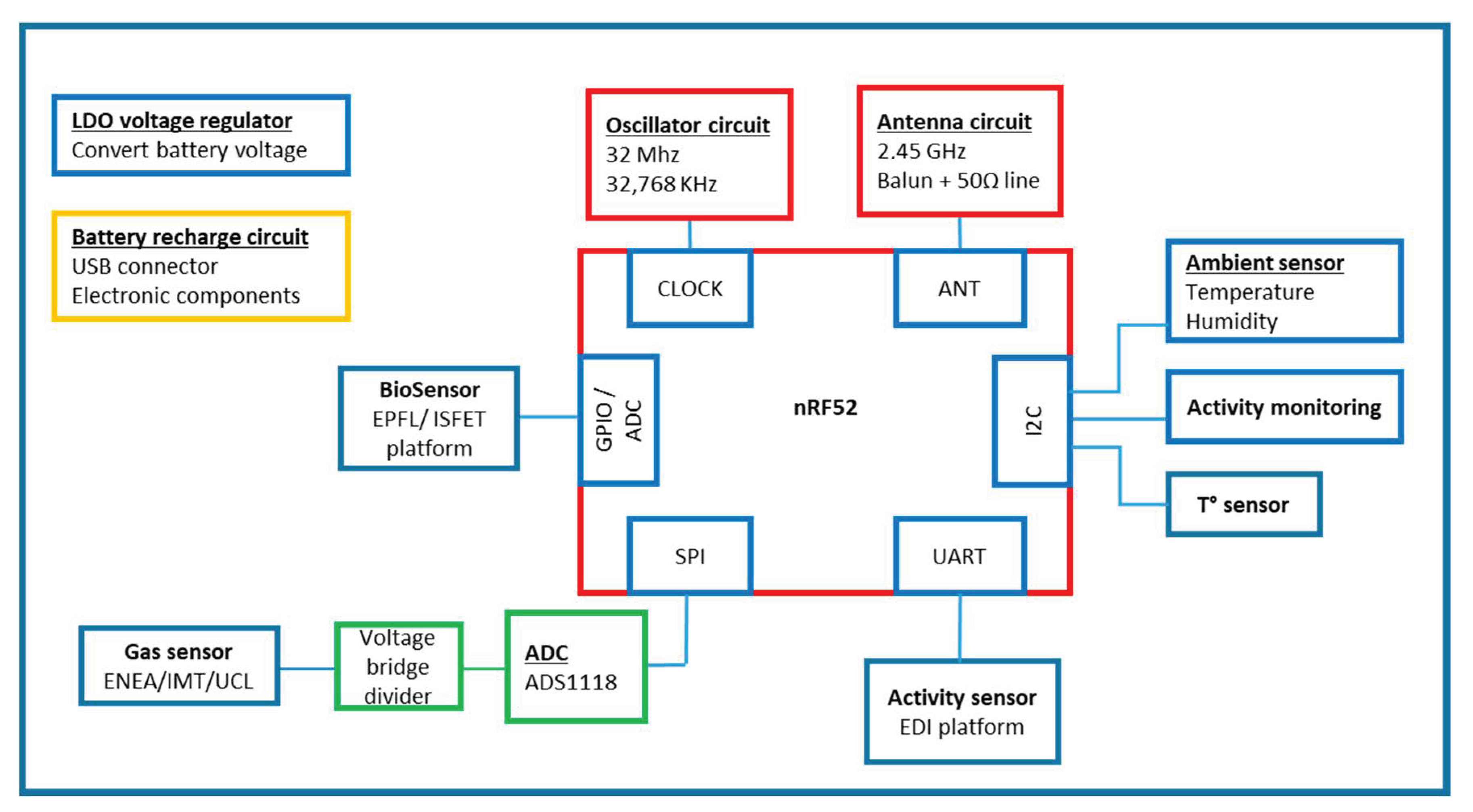

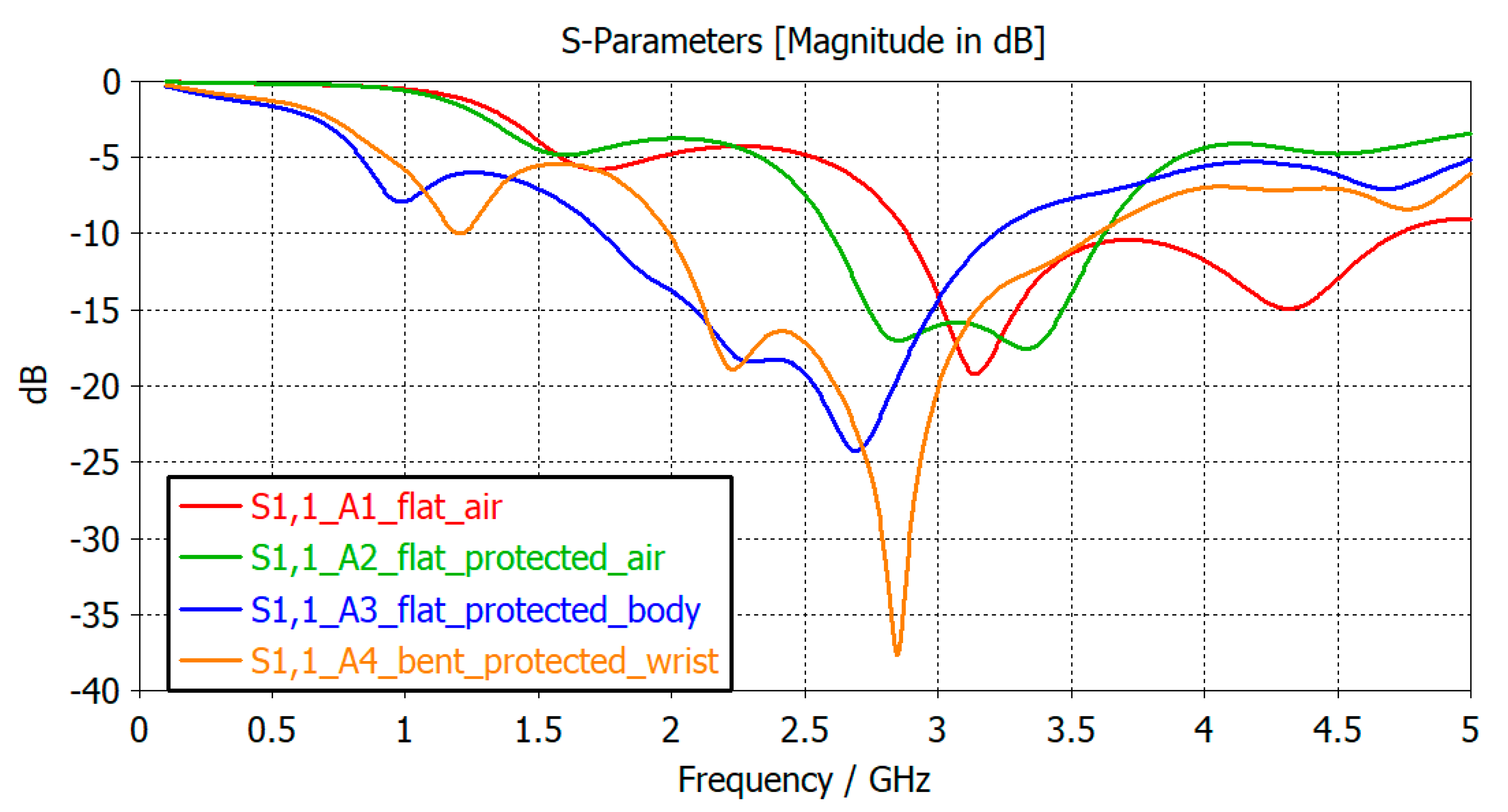

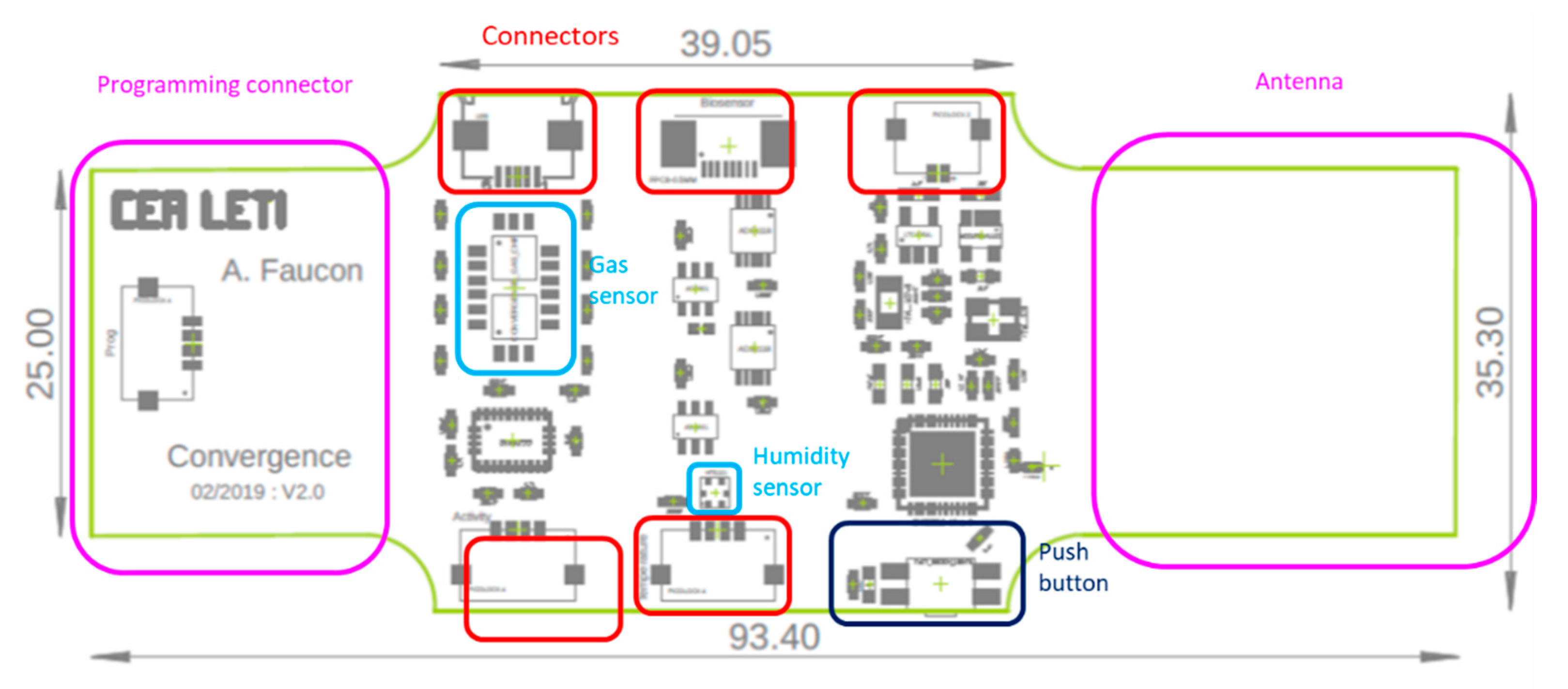
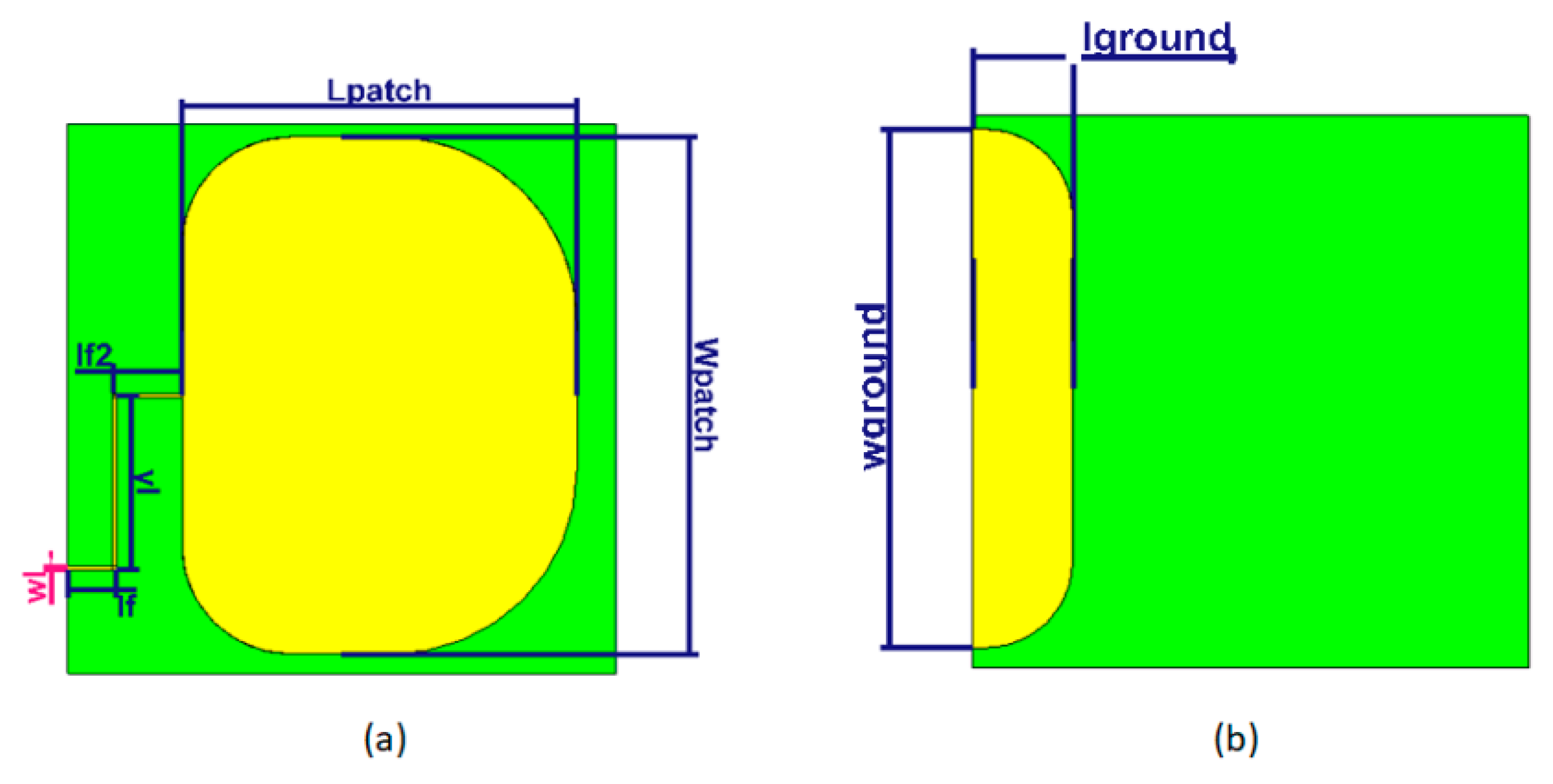



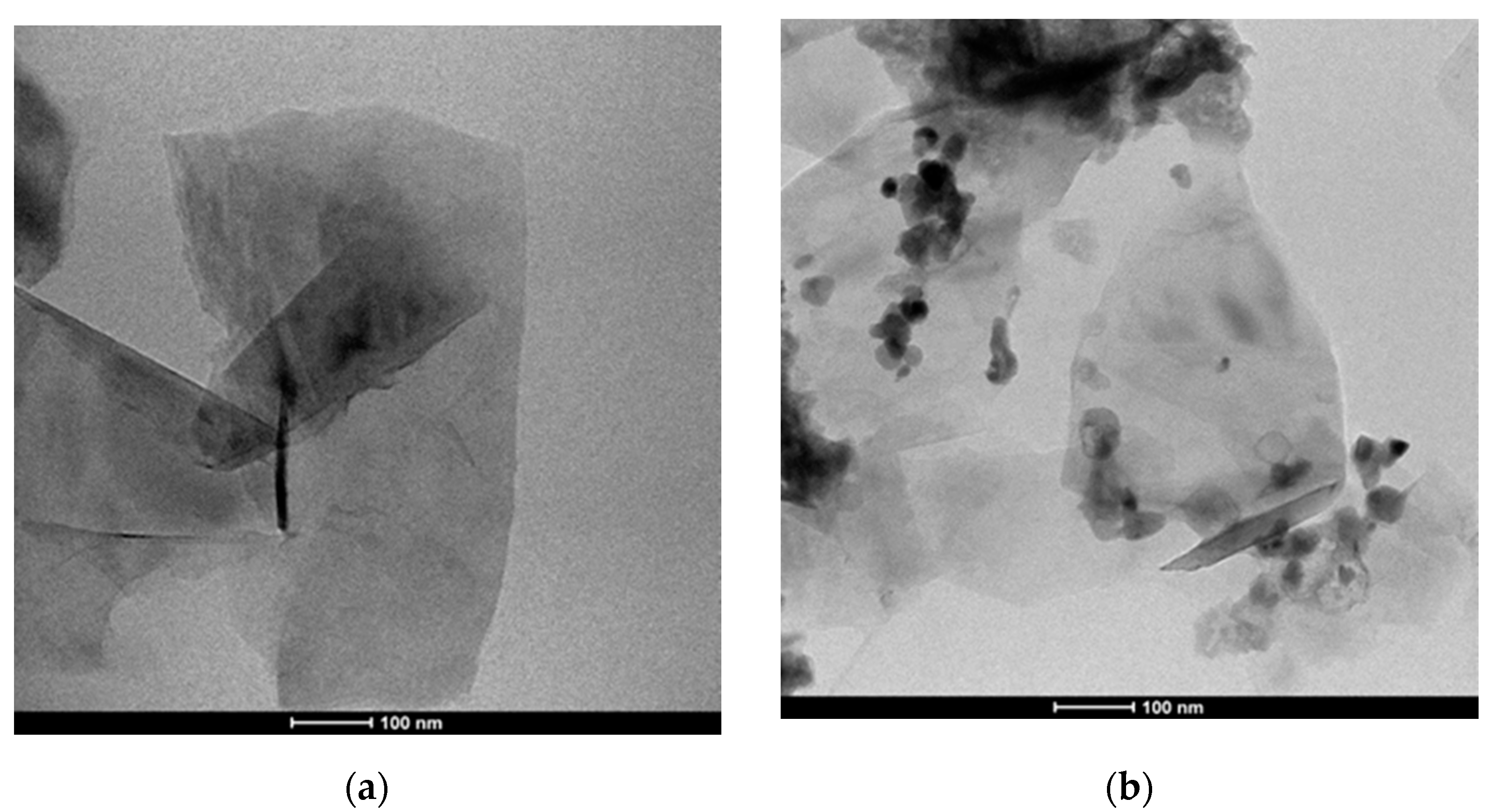
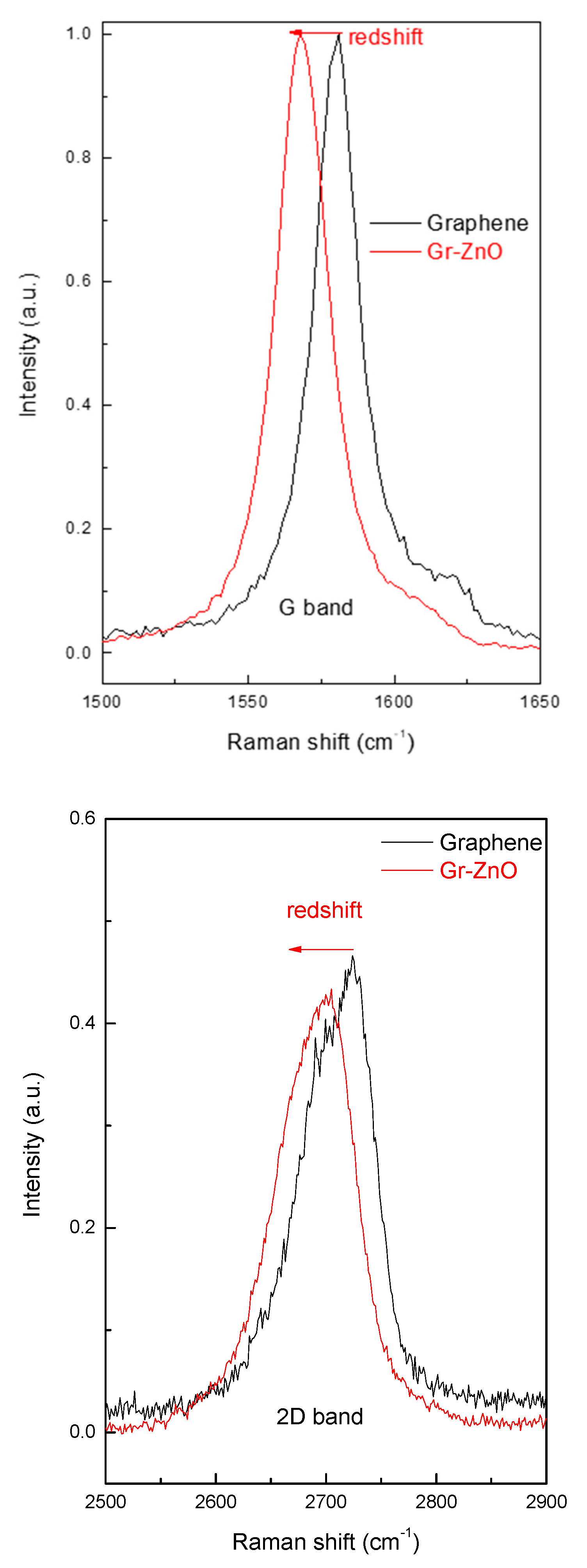
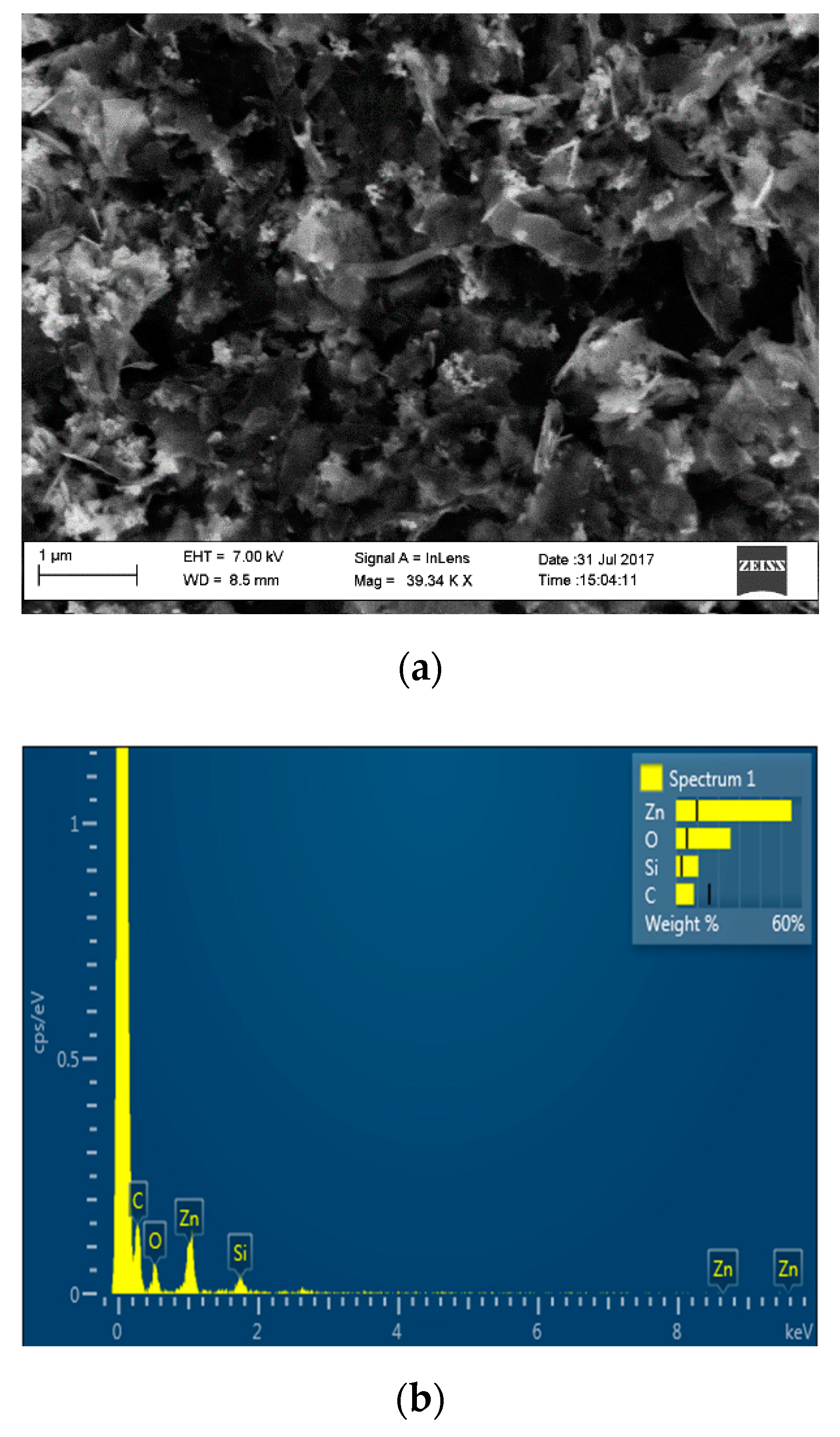
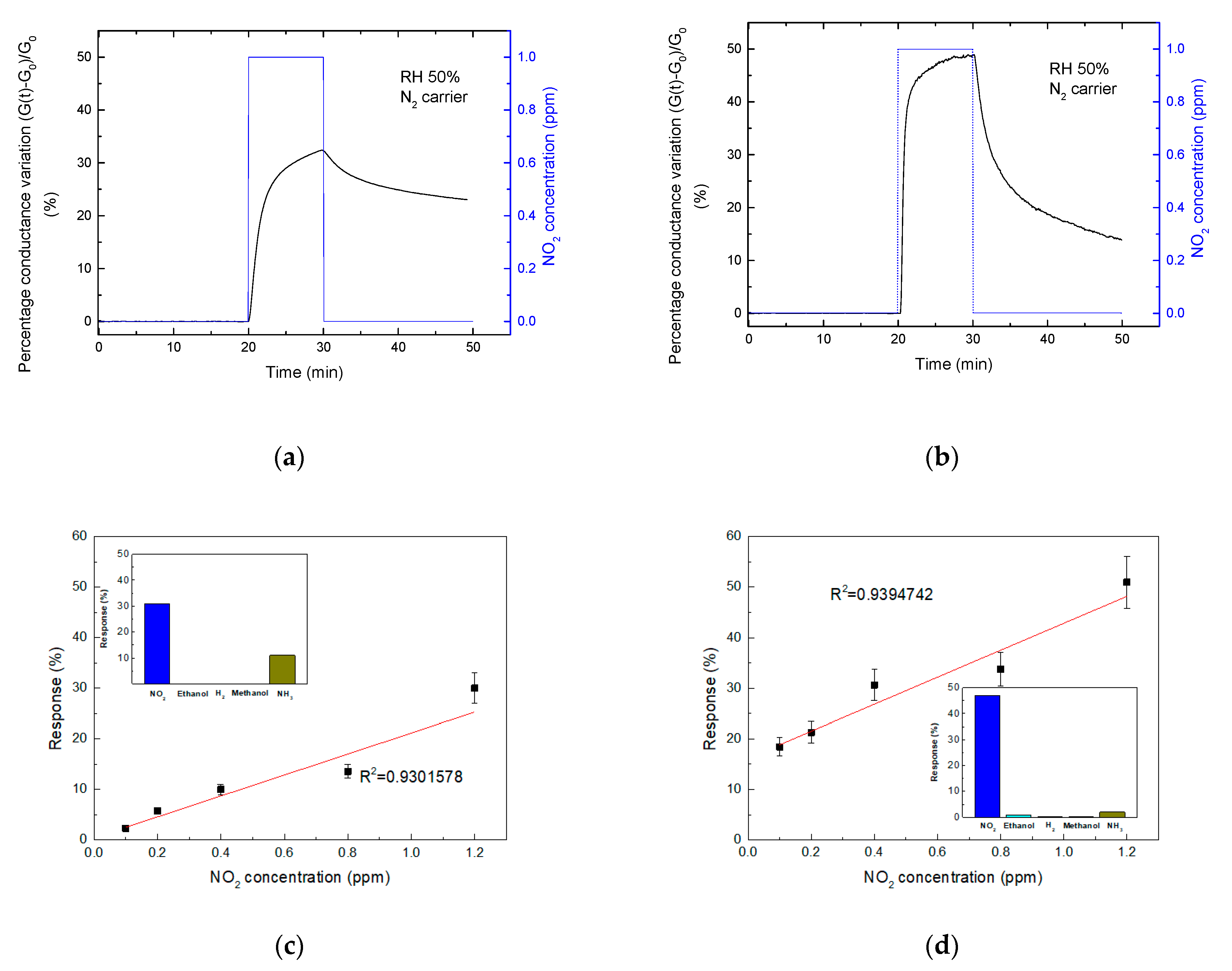


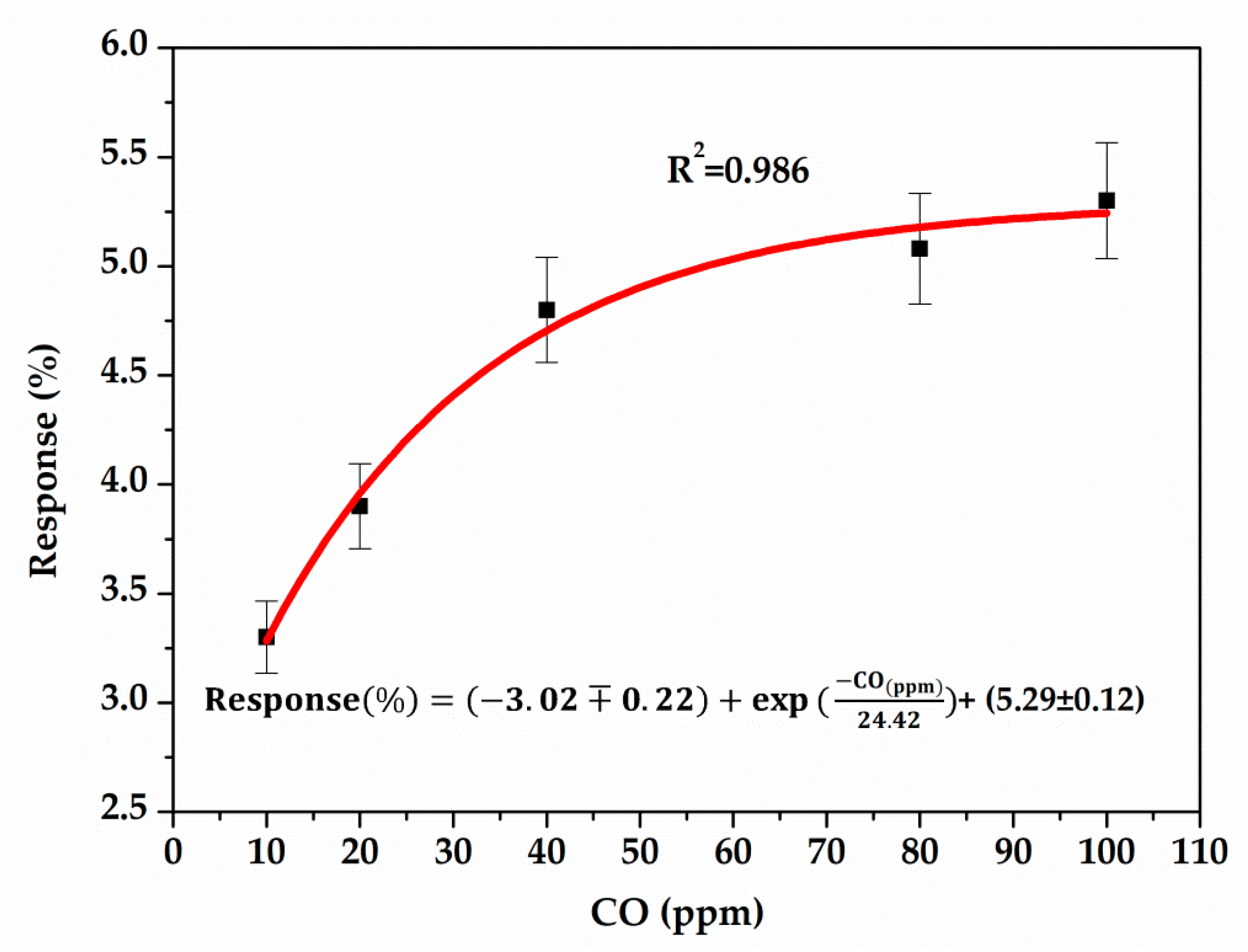



| Sensors | Sampling Rate (Hz) |
|---|---|
| Embedded activity sensor | 10 |
| Embedded Temperature & humidity sensor | 1 |
| Gas | 10 |
| Activity platform (EDI) | 2 |
| ISFET sweat/pH biosensor | 1 |
| Temperature | 2 |
| Conditions | Communication Distance | Transmission Power | Receiver’s Sensitivity | Desired Antenna Gain |
|---|---|---|---|---|
| Worst scenario | 10 m | −20 dBm | −90 dBm | −9.77 dB |
| Best scenario | 10 m | 4 dBm | −90 dBm | −33.77 dB |
| Tissue | Radius (mm) | Permittivity | Loss Tangent |
|---|---|---|---|
| Skin | 2 | 38.06 | 0.28 |
| Fat | 5 | 5.29 | 0.15 |
| Muscle | 12 | 52.79 | 0.224 |
| Bone | 10 | 18.49 | 0.25 |
| Conditions | Transmission Power | Receiver’s Sensitivity | Antenna Gain | Maximum Distance |
|---|---|---|---|---|
| In air | −20 dBm | −90 dBm | 2.65 dBi | 41.5 m |
| On wrist | −20 dBm | −90 dBm | −2.44 dBi | 23.0 m |
| On wrist (folded) | −20 dBm | −90 dBm | −5.73 dBi | 15.8 m |
| Antenna (with Protected Resin) at 2.45 GHz | Reflection Coefficient (dB) | Realized Gain (dB) | Total Efficiency (%) |
|---|---|---|---|
| Antenna in air (A2) | −6.5 | 2.65 | 68.6% |
| Antenna on wrist (A3) | −18.5 | −2.44 | 13.9% |
| Bended antenna on wrist (A4) | −16.5 | −5.73 | 12.1% |
| Material | Thickness | Characteristics | |
|---|---|---|---|
| Substrate | Kapton | 0.05 mm | Relative Permittivity: 3.3 Tan (δ): 0.004 @ 2.45 GHz |
| Conductor | Copper | 0.0035 mm | Conductivity: 5.8 × 107 S/m |
| Protect | Varnish | 0.0025 mm | Relative Permittivity: 4.3 Tan(δ): 0.03 |
| Resin | Flexible Silicon | 3 mm below circuit 5 mm above circuit | Relative Permittivity: 2.8 Tan(δ): 0.0015 @ 1 MHz |
| Parameter | Value (mm) | Parameter | Value (mm) | Parameter | Value (mm) |
|---|---|---|---|---|---|
| Wpatch | 24 | lf | 3 | wground | 24 |
| Lpatch | 18 | lf2 | 3 | lground | 4.5 |
| wl | 0.15 | yl | 8 |
| Scenario | Consumption | |
|---|---|---|
| Static mode (A) | nRF52 configuration: OFF Mode BLE communication disabled All peripherals/GPIOs disabled | 760 µWh Pavg = 0.76 mW Pmax= 0.76 mW |
| Dynamic mode (B,C) | nRF52 configuration: LP mode BLE communication enabled Sending connection request (advertising packets every 1 s) Sleep mode for internal sensors | 3.9 mWh Pmax = 52 mW |
| Dynamic mode (D) | nRF52 configuration: LP mode BLE communication enabled Mode connected + notifications enabled Waiting sensor notification (L2CAP packets every 100 msec) Sleep mode for internal sensors | 4.1 mWh Pmax = 29 mW |
| Dynamic mode (G) | nRF52 configuration: LP mode Mode connected + notifications enabled Inertial Measurement Unit (IMU): acquisition measures (accelerometer, gyrometer & quaternion) + sending data (20 bytes) at 10 Hz T&RH sensor: sleep mode Analog-to-Digital Converter: sleep mode | 42.8 mWh Pavg = 43 mW Pmax = 78 mW |
| Dynamic mode (F) | nRF52 configuration: LP mode Mode connected + notifications enabled Accelerometer: sleep mode T&RH sensor: acquisition + sending data (4 bytes) at 1 Hz Analog-to-Digital Converter: sleep mode | 4.2 mWh Pavg = 4.2 mW Pmax = 29 mW |
| Dynamic mode (E) | nRF52 configuration: LP mode Mode connected + notifications enabled Accelerometer: sleep mode T&RH sensor: sleep mode Analog-to-Digital Converter: acquisition + sending data (16 bytes) at 10 Hz | 6.7 mWh Pavg = 6.7 mW Pmax = 45 mW |
| Name of Ink-Jet Formulation | Conductivity (mS·cm−1) | pH | Viscosity (CP) |
|---|---|---|---|
| PANI: PSS (EG/Tween 80%) | 2 | 4.0 | 8 |
| PANI:PSS/SWCNT (PSS:Lacticacid:EG; Tween 80%) | 4.98 | 6.0 | 12 |
| Sample Name | R (kΩ) | Sensitivity to NO2 | |
|---|---|---|---|
| Pristine graphene | ENEA 1 | 0.46 | 37% @ 300 ppb |
| Pristine graphene | ENEA 2 | 0.4 | 31% @ 1 ppm |
| Pristine graphene | ENEA 3 | 1.9 | 23% @ 1 ppm |
| ZnO NP decorated graphene | ENEA 4 | 88 | 50% @ 1 ppm |
| Multimeter Measures [Ω] | Platform Measures [Ω] | Error [%] | Value Converted by the ADC [V] | |
|---|---|---|---|---|
| ENEA2 | 593 | 598 | 0.8% | 145 |
| ENEA3 | 1984 | 2009 | 1.26% | 477 |
| Multimeter Measurements [kΩ] | Base Resistance Not Connected to Platform [kΩ] | Base Resistance Connected to Platform [kΩ] | Conductance Variation Not Connected | Conductance Variation Connected | |
|---|---|---|---|---|---|
| Pristine graphene | 90 | 99 | 91 | 25% | 31% |
| G-ZnO | 82 | 79 | 90 | 58% | 63% |
Publisher’s Note: MDPI stays neutral with regard to jurisdictional claims in published maps and institutional affiliations. |
© 2021 by the authors. Licensee MDPI, Basel, Switzerland. This article is an open access article distributed under the terms and conditions of the Creative Commons Attribution (CC BY) license (http://creativecommons.org/licenses/by/4.0/).
Share and Cite
Saoutieff, E.; Polichetti, T.; Jouanet, L.; Faucon, A.; Vidal, A.; Pereira, A.; Boisseau, S.; Ernst, T.; Miglietta, M.L.; Alfano, B.; et al. A Wearable Low-Power Sensing Platform for Environmental and Health Monitoring: The Convergence Project. Sensors 2021, 21, 1802. https://doi.org/10.3390/s21051802
Saoutieff E, Polichetti T, Jouanet L, Faucon A, Vidal A, Pereira A, Boisseau S, Ernst T, Miglietta ML, Alfano B, et al. A Wearable Low-Power Sensing Platform for Environmental and Health Monitoring: The Convergence Project. Sensors. 2021; 21(5):1802. https://doi.org/10.3390/s21051802
Chicago/Turabian StyleSaoutieff, Elise, Tiziana Polichetti, Laurent Jouanet, Adrien Faucon, Audrey Vidal, Alexandre Pereira, Sébastien Boisseau, Thomas Ernst, Maria Lucia Miglietta, Brigida Alfano, and et al. 2021. "A Wearable Low-Power Sensing Platform for Environmental and Health Monitoring: The Convergence Project" Sensors 21, no. 5: 1802. https://doi.org/10.3390/s21051802










